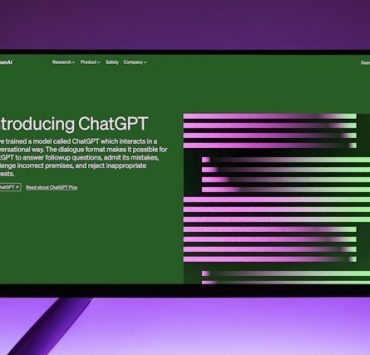Notes on books

When people ask what translations of the “Noli me tangere” and “El Filibusterismo” I recommend, my standard answer is: Virgilio S. Almario for Filipino, and for English: Soledad Lacson-Locsin, Penguin-Harold Augenbraum, or León María Guerrero. Looking for these in a bookstore is the challenge.
There was a time when National Bookstore, busy with other merchandise, neglected books in their presentation and shelving. In the last century, a “Filipiniana” shelf was reserved for books on the Philippines or by Filipino authors; everything else was arranged alphabetically. Fiction was particularly tricky. Gabriel García Márquez’s “Love in the Time of Cholera” could be found under “Health,” while Bienvenido Santos’ “The Praying Man” and F. Sionil José’s “Sins” were displayed beside bibles under “Religion.”
Today, depending on the branch you visit Filipiniana may still be segregated, it is never given pride of place anyway, and books can be arranged first by publisher: University of the Philippines Press, Ateneo Press, New Day Publishing, Anvil Publishing Inc., etc. and within that alphabetically by author which explains why my books are almost always on the lower shelves. It is more complicated when the branch does not have a dedicated “Filipiniana” section so local books must compete for dominance with foreign books. I think bookstore classification and display in the Philippines will make a fine doctoral dissertation for the branch of academic inquiry known today as the history of the book.
I hope we have come a long way since the days of random shelving in bookstores I knew growing up, and I hope that things have improved in terms of sales personnel such that this exchange does not happen anymore:
Customer: “Miss, meron po ba kayong ‘Noli me tangere’?”
Saleslady: “Noli me tangere? Hmmm … sinong author non?”
Filipino bookstore clerks know Rizal is the author of the “Noli,” they get confused by the different editions and translations. The Lopez Museum and Library used to have a special shelf with translations in various languages: English, French, German, Chinese, and even Russian. I have translations in Thai and Burmese. There are simply so many editions and translations of Rizal’s novels in the market today: full translations, partial or abridged translations, student editions that have chapter summaries and guide questions. Versions for grade school, high school, college, and graduate school. There are “komiks” versions, two audio versions in English, the most impressive being Richard Grant reading the León María Guerrero translation on Audible. There are two versions in film, both in Filipino, one by National Artist Gerardo de León in black and white, another, in 18 hours, by National Artist Eddie Romero.
That Rizal’s novels are largely available in English and Filipino is a reflection of market demand based on reader preference and the medium of instruction used in the Rizal course in Philippine schools, colleges, and universities. Rizal’s novels are largely read in Filipino because these used to be required reading, together with Francisco Balagtas’ “Florante at Laura” in Filipino class. A pity that Rizal isn’t read in English class, the same way as Geoffrey Chaucer or William Shakespeare. Nowhere are the novels available in the original Spanish, except from the National Historical Commission of the Philippines that has been churning out facsimiles of the original manuscript since 1957. The Commission sometimes reprints facsimiles of the first editions: “Noli” (1887) and “Fili” (1891).
To my knowledge both “Noli” and “Fili” are available in German, French, Russian, Chinese, and Japanese. The novels were translated into the major Philippine languages by the Jose Rizal National Centennial Commission but are now out of print. Extant copies, available from the secondary market, are in Cebuano, Visayan, Hiligaynon, Ilocano, Kapampangan (“Noli” only), Pangasinan, Leyte-Samar, etc. Since these are in the public domain, perhaps local governments should reprint and distribute them so that Rizal can be read in the regions in various Philippine languages.
There are many versions in English, the earliest being an abridged version “Eagle Flight” (1900), the most recent being the 2006 Penguin edition by Harold Augenbraum. Earliest Tagalog translation of the “Noli” is by Pascual H. Poblete (1906) that was superceded by the more popular Patricio Mariano translation, but the best contemporary version is by National Artist Virgilio S. Almario (1998). The most popular English versions used to be by Charles Derbyshire, published in 1912, with the “Noli” rendered as “The Social Cancer” and the “Fili” as “The Reign of Greed.” These were steadily in use for decades (and is still available online for free) until these were replaced by more contemporary translations by León María Guerrero “Noli”/”The Lost Eden” (1961) “Fili”/”The Subversive” (1962) and Soledad Lacson-Locsin (1996).
The above descriptions comprise random notes toward a history of Jose Rizal’s books. These notes lead to many questions, far from bibliographic, that will hopefully open our eyes to the way books are produced and sold. More importantly, the inquiry should lead to insights on the transmission and reception of ideas in the Philippines.
—————-Comments are welcome at aocampo@ateneo.edu
Ambeth is a Public Historian whose research covers 19th century Philippines: its art, culture, and the people who figure in the birth of the nation. Professor and former Chair, Department of History, Ateneo de Manila University, he writes a widely-read editorial page column for the Philippine Daily Inquirer, and has published over 30 books—the most recent being: Martial Law: Looking Back 15 (Anvil, 2021) and Yaman: History and Heritage in Philippine Money (Bangko Sentral ng Pilipinas, 2021).


















